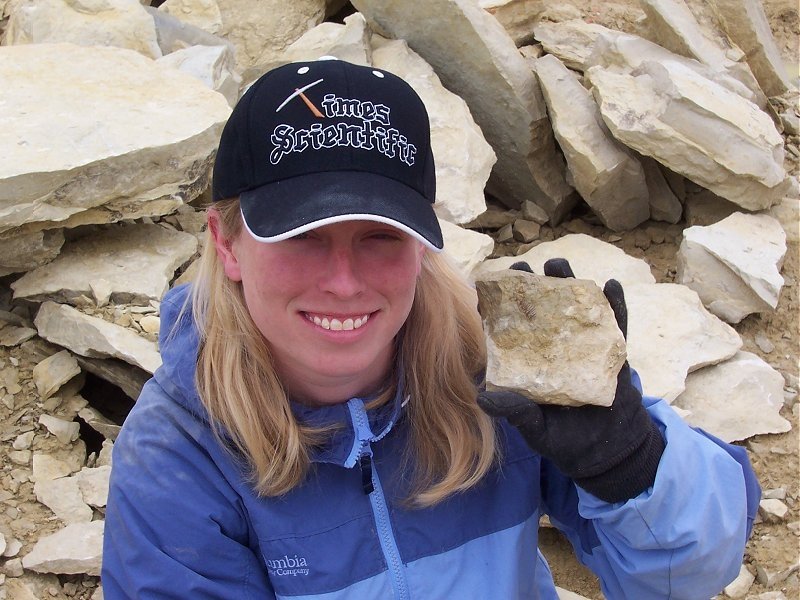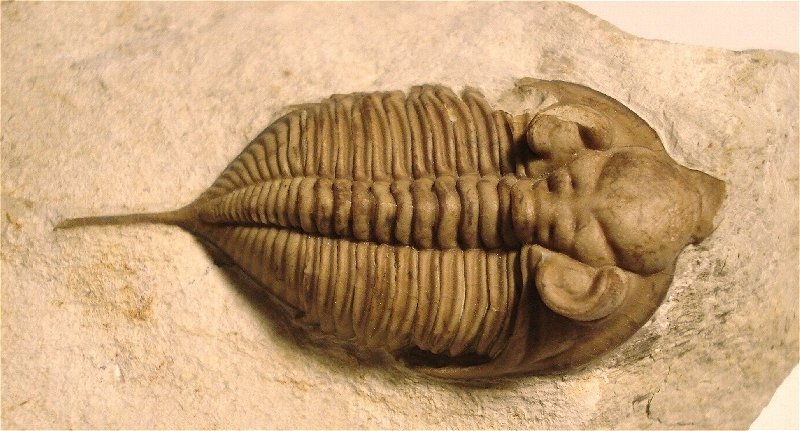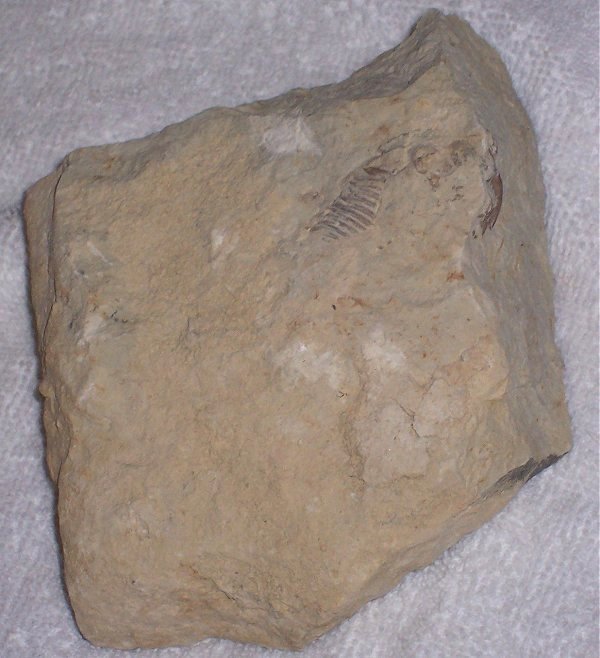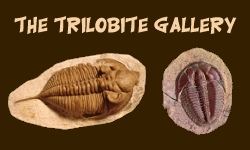Huntonia Triolobites
Fast Facts about Huntonia Trilobites
Taxonomy:
Phylum: Arthropoda - Class: Trilobita - Order: Phacopida - Suborder: Phacopina - Family: Dalmanitidae - Genus: Huntonia
Common Genus: huntonensis, oklahomae, lingulifer
Age: Devonian
Distribution: Oklahoma, U.S.
The Huntonia genus is found in the Haragan and Bois D'Arc Formations of Oklahoma.
Body Size:
Huntonia trilobites are medium in size. They range from around an inch to nearly 5 inches (13 cm).
Diet:
Like all Phacopida trilobites, their large eyes and body shape indicate a predatory lifestyle, patroling the sea floor.
Physical Appearance:
Huntonia are beautiful trilobites. They have a "snout" protruding from their cephalon, long genial spines (spines on the cheaks), and a long spine on the pygidium.
Huntonia Trilobite Facts and Information
Huntonia trilobites have an interesting look. They have a "snout" on the front of their cephalon, they have large, round, eyes that stick up from the cephalon, short genial spines,
and a pygidial spine (tail). The main difference between the more rare Huntonia lingulifer and the more common Huntonia huntonensis is that H. lingulifer has a much longer pygidial spine.
Huntonia trilobites can range in size. Many found are between 2 and 3 inches. They can however reach sizes that approach 6".
Bob Carroll had been prepping a few that were well over 5" in length when we were there.
Based on the shape of the trilobite, it roamed the bottom of the sea floor, possibly hunting or scavanging.
Image sequence of the preparation of a Huntonia Trilobite from Oklahoma
Preparation sequence of the Huntonia lingulifer trilobite
Locality Information
Huntonia Trilobites are found in the Lower Devonian Haragan Formation in Coal County, Oklahoma.
The trilobites on this page came from a collecting trip into Bob Carroll's quarry at Black Cat Mountain.
Here is the fossil trip to Black Cat Mountain, Oklahoma.
Huntonia Fossil Examples
H. lingulifer and H. huntonensis
Huntonia lingulifer

Fully prepped Huntonia trilobite fossil
Location:Black Cat Mountain, Oklahoma
Age:Lower Devonian
Formation: Haragan Formation
Huntonia huntonensis
These Huntonia are more common and have a shorter pygidial spine.

This is a pygidium of a huntonia huntonensis trilobite. Notice the shorter spine than the lingulifer trilobite fossil

Here are two pieces of Huntonia huntonensis. These show how large they can become. For example, the remaining part of the pygidium on the left is about 1.5 inches. Doing a quick ratio conversion, the complete trilobite would have been around 5.7"
Recommended Trilobite and Fossil Hunting Books:
Trilobites for Sale:
Trilobites from Fossil Era
Trilobite fossils are some of the most beautiful and collectible fossils in the world!
There are countless species of trilobites. They make beautiful display and conversation pieces.
Common ones make very affordable for gifts to fossil and paleontology enthusiasts.
Fossil Era has a huge selection of top quality trilobites from many states and many countries. It's fun just to browse through the inventory and look at all the different types!

















